[PDF] [PDF] - Johnson Controls Inc.
[PDF] [PDF] - Johnson Controls Inc.
[PDF] [PDF] - Johnson Controls Inc.
Create successful ePaper yourself
Turn your PDF publications into a flip-book with our unique Google optimized e-Paper software.
<strong>Johnson</strong> <strong>Controls</strong> Automotive Experience<br />
Global Supplier Standards Manual<br />
Metal Prototype Welding Operator Qualifications and Procedures<br />
May 2013<br />
PURPOSE<br />
The purpose of the Global Supplier Standards Manual is to communicate <strong>Johnson</strong><br />
<strong>Controls</strong> <strong>Inc</strong>. metal prototype weld fixture design requirements to the suppliers in<br />
our Automotive Experience Division that provide prototype parts. It is the<br />
expectation of <strong>Johnson</strong> <strong>Controls</strong> <strong>Inc</strong>. that all suppliers comply with all of the<br />
requirements and expectations documented in this manual.<br />
SCOPE<br />
Geographic Applicability-<br />
This policy applies globally to all JCI Automotive Experience (AE) Manufacturing<br />
and Parts Distributions locations that are involved in the purchase of products and<br />
services for use internally or resale.<br />
All elements listed in the document are required unless expressly written in the<br />
request for quote or the purchase order from <strong>Johnson</strong> <strong>Controls</strong>.<br />
Welding Equipment Type and Validation<br />
Basic Equipment<br />
Weld wire type: AWS grade ER70 S6. .035’ dia. (or other as directed by JCI)<br />
Preferred brand- ESAB SpoolArc 86.<br />
Allowable substitute with JCI consent: Lincoln SuperArc L-56.<br />
Shielding gas: 90% Ar/10% CO², 40–45 cfh. delivery volume.<br />
Power Supply: Inverter type with visual outputs for basic parameters of voltage<br />
and current values. Process is Short<br />
Circuit Arc mode (unless directed otherwise by JCI).<br />
Wire feeder: Dual or single drive roll with visual output for wire feed speed.<br />
Maintenance Checks and Tooling<br />
<br />
<br />
<br />
<br />
<br />
<br />
<br />
Validate ground connection to weld fixture and/or parts to be welded. Direct<br />
ground to part is preferred.<br />
Ensure use of new, correct size torch contact tip before welding.<br />
Validate condition of (and/or replace) wire conduit (liner).<br />
Clean wire feeder drive rolls and adjust for proper tension.<br />
Ensure there are no kinks or radical bends in torch cable from wire feeder to<br />
point of welding.<br />
All welding is to be performed in the “flat, down-hand” position. No welding of<br />
assemblies at an angle greater than 15o relative to the floor. No vertical<br />
up/down, or upside-down welds are allowed.<br />
If product requires welds on opposite side of part in the flat position, provision<br />
must be made for indexing or rotating the assembly to position it within stated<br />
limits.<br />
Uncontrolled if printed Page 1 of 2
<strong>Johnson</strong> <strong>Controls</strong> Automotive Experience<br />
Global Supplier Standards Manual<br />
Metal Prototype Welding Operator Qualifications and Procedures<br />
May 2013<br />
<br />
<br />
<br />
All weld joints must be accessible for torch clearance to allow for the basic<br />
torch to weld joint angles of: 45o to weld<br />
root (fillet joint), 10o lead, or “push” angle relative to work. Flare Bevel<br />
joints require a shallower angle approach. Flare<br />
Vee joints are to be bisected. All welds to be performed as “push” in torch<br />
travel direction.<br />
Personal Protective Equipment (PPE) and Health and Safety Guideline<br />
<br />
<br />
<br />
<br />
<br />
Proper and adequate work lighting is to be provided for the operator at the<br />
point of work.<br />
Fixtures are to be positioned to allow for comfortable reach to weld areas<br />
without straining or fatigue.<br />
Ensure correct/adequate personal protective equipment has been issued to<br />
operators and is being properly used.<br />
The use of auto-darkening weld helmets is mandated.<br />
Use of vision correction lenses is mandated if normally worn.<br />
Weld Operator Certification:<br />
<br />
<br />
<br />
<br />
<br />
<br />
<br />
<br />
<br />
Identify specific operators that will perform the welding operation on JCI<br />
products.<br />
Gather surrogate material representative of the type and gauge typically<br />
used in JCI assemblies.<br />
Using the surrogate material which is grounded in the same fashion as the<br />
actual parts to be welded, each operator is to tune the power supply to<br />
his/her unique welding technique.<br />
Wire “stick out” beyond contact tip is limited to 12-15 mm max.<br />
Examples are to include variables of thick/thin material combinations.<br />
Make samples of each type of weld joint to be encountered.<br />
Evaluate the welded parts via cut & etch and /or destructive testing as<br />
dictated by the individual customer requirements to ensure compliance.<br />
If necessary, make any needed adjustments to weld parameters or<br />
equipment and repeat the cut & etch and/or destructive testing and visual<br />
defect evaluation until satisfactory welds are achieved.<br />
Record the date, operator’s name, and retain the weld sample for each<br />
joint type as part of the individual operator’s<br />
Uncontrolled if printed Page 2 of 2


![[PDF] [PDF] - Johnson Controls Inc.](https://img.yumpu.com/23687654/1/500x640/pdf-pdf-johnson-controls-inc.jpg)
![[PDF] JCI Gage Standards - Johnson Controls Inc.](https://img.yumpu.com/23687663/1/190x245/pdf-jci-gage-standards-johnson-controls-inc.jpg?quality=85)
![[PDF] Download our Full Range of Li-Ion Technologies Spec Sheet](https://img.yumpu.com/23687660/1/190x245/pdf-download-our-full-range-of-li-ion-technologies-spec-sheet.jpg?quality=85)
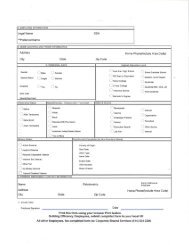

![[PDF] NA Direct & Indirect Supplier Communication Letter - Johnson ...](https://img.yumpu.com/23687657/1/190x245/pdf-na-direct-indirect-supplier-communication-letter-johnson-.jpg?quality=85)
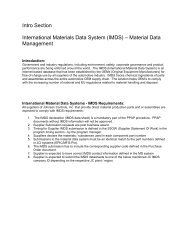
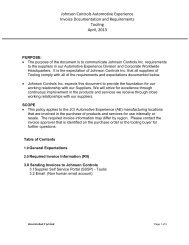

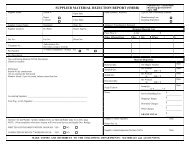
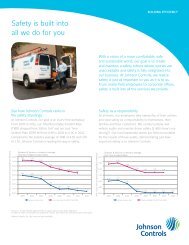
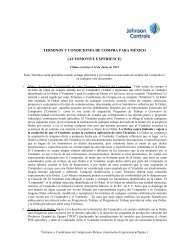


![[PDF] Warren S. Johnson Society of Retirees, Inc.](https://img.yumpu.com/23687624/1/190x245/pdf-warren-s-johnson-society-of-retirees-inc.jpg?quality=85)